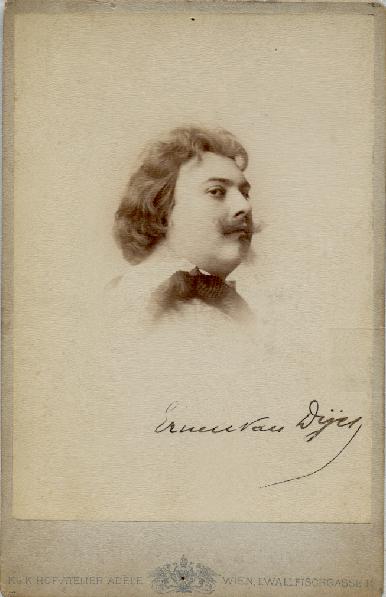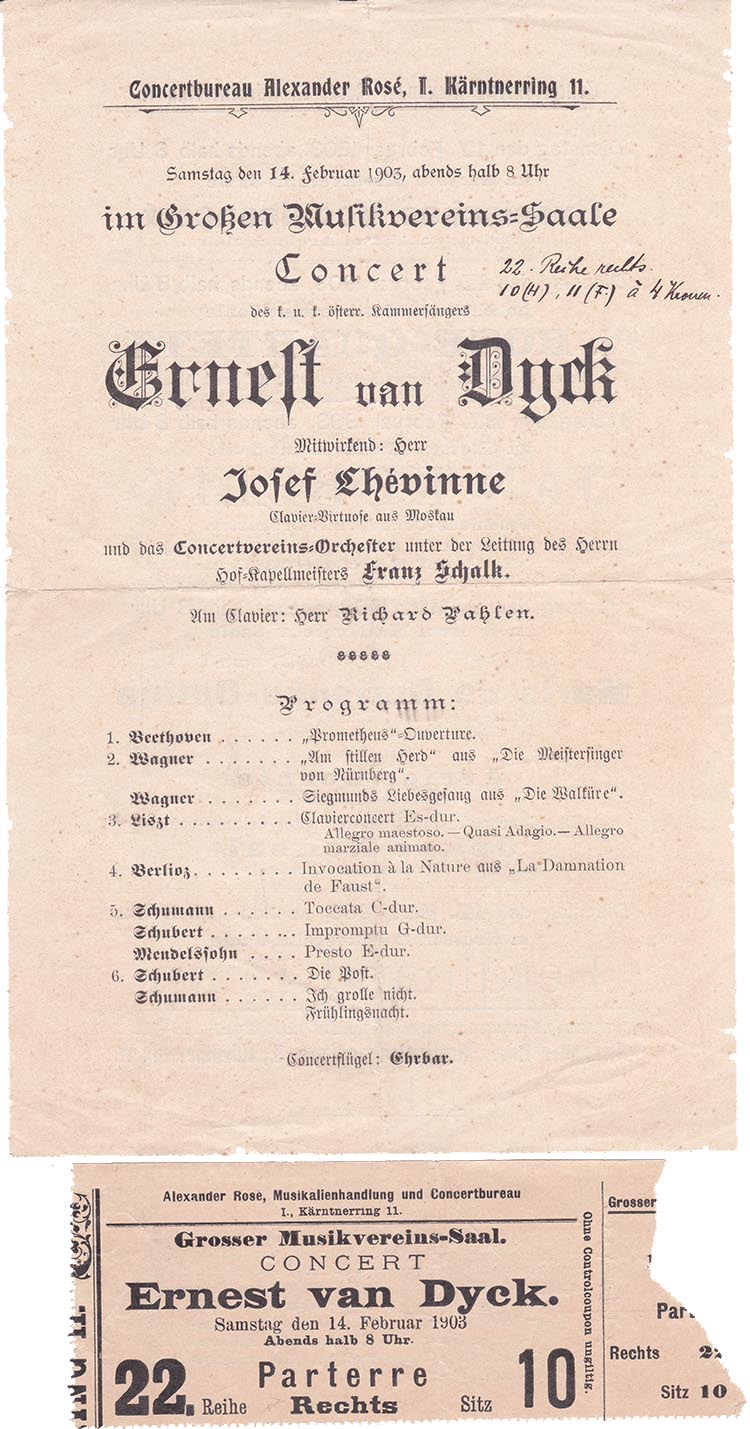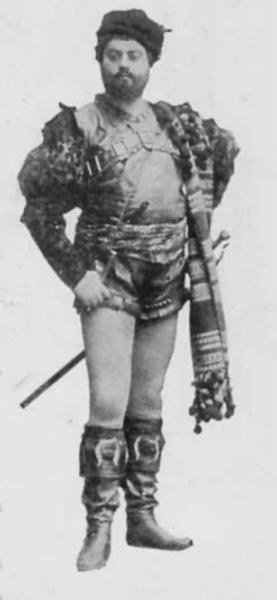|
 |
His stage debut took place in his native Antwerp in 1884. In 1887, he sang the title role in the French premiere of
Lohengrin (at the Eden Theater in Paris). Next, he went to Karlsruhe so as to study the German language, and Wagner's music
with
conductor Felix Mottl. In summer 1888, he was already Parsifal in Bayreuth, a role that he was to inhabit at the festival
until 1901, repeating it in 1911 and 1912.
The Vienna Hofoper hired him in November 1888; his debut role was Lohengrin. However, more than in Wagner, the
Vienna public appreciated him as Canio, as Massenet's des Grieux, and as Werther, which he sang at the Vienna world
premiere on February 16th, 1892. He stayed in Vienna until 1898, making guest appearances in Antwerp, Monte Carlo, St.
Petersburg (1894 and 1897), at Covent Garden (regularly from 1891 onwards; in 1907, he organized a German season there),
and above all in Paris. For Paris, he created Siegmund (1892) and the elder Siegfried (1908), and he had splendid
success there as Tannhäuser in 1895.
From 1898 to 1902, Van Dyck was a member of the New York Met, where he was successful as Lohengrin, Tannhäuser,
Tristan and Siegmund. For the rest of his career, he was a freelancer, singing in
Moscow (1902), Prague (1905), Budapest (1909), Marseille (1910) or Nice (1914). From 1906, he taught voice at the
conservatories of Antwerp and Brussels; among his pupils was Fernand Ansseau.
Reference 1: Kutsch & Riemens; reference 2
The son of an industrialist, Van Dyck began studying law in Belgium, then went to Paris and
worked as a journalist, while taking voice lessons (with Massenet and Chabrier, among others) – just for fun. It was
Massenet who convinced him to give professional singing a try. In 1883, Van Dyck made his debut in
Paris as a concert singer; as such, he was associated with the Concerts Lamoureux from 1883 to 1887.
 |
 |
 |
| Ernest van Dyck sings | Werther: Pourquoi me réveiller |
| Ernest van Dyck sings | Die Walküre: Plus d'hiver (2) |
| Ernest van Dyck sings | Die Walküre: Plus d'hiver (1) |
Die Meistersinger von Nürnberg – ?, April 1883 (concert)
Le désert – Antwerp, ? (concert)
? – Paris, Th. du Château d'Eau, 1884 (stage debut, but no work indicated in reference)
De Schelde – Antwerp, Salle de l'Harmonie, 27 May 1884
Lohengrin – Paris, Eden, 30 April 1887
Parsifal – Bayreuth, Festspielhaus, 25 July 1888
Roméo et Juliette – Wien, Hofoper, 11 January? 1889
Le vassal de Szigeth – Wien, Hofoper, 4 October 1889
Faust – Wien, Hofoper, 1890
Armide – Wien, Hofoper, 2 February? 1890
Rheingold – Wien, Hofoper, 8 March? 1890
Ernani – Wien, Hofoper, 26 April? 1890
Manon – Wien, Hofoper, 19 November 1890
Werther – Wien, Hofoper, 16 February 1892
Die Walküre – Paris, Opéra, 12 May 1893
Pagliacci – Wien, Hofoper, 19 November 1893
Cornelius Schut – Wien, Hofoper, 23 November 1894
Amy Robsart – Monte Carlo, Garnier, 16 February 1895
Tannhäuser – Paris, Opéra, 13 May 1895
La Navarraise – Wien, Hofoper, 4 October 1895
Evangelimann – Wien, Hofoper, 11 January 1896
La damnation de Faust – Monte Carlo, Garnier, 26 March 1896
Le chevalier d'Harmenthal – Wien, Hofoper, 27 November 1896
Moïna – Monte Carlo, Garnier, 14 March 1897
Tristan und Isolde – London, Covent Garden 7 June 1898
Götterdämmerung – Paris, Opéra, 23 October 1908
I wish to thank Tom Silverbörg for the Ernani picture.
I wish to thank Christian Torrent for the Tannhäuser picture.
Reference: Henri de Curzon Ernest van Dyck, Librairie Nationale d'Art et d'Histoire, Bruxelles, 1933.
Richard T. Soper: Belgian opera houses and singers, The Reprint Company, Spartanburg, South Carolina, 1999.